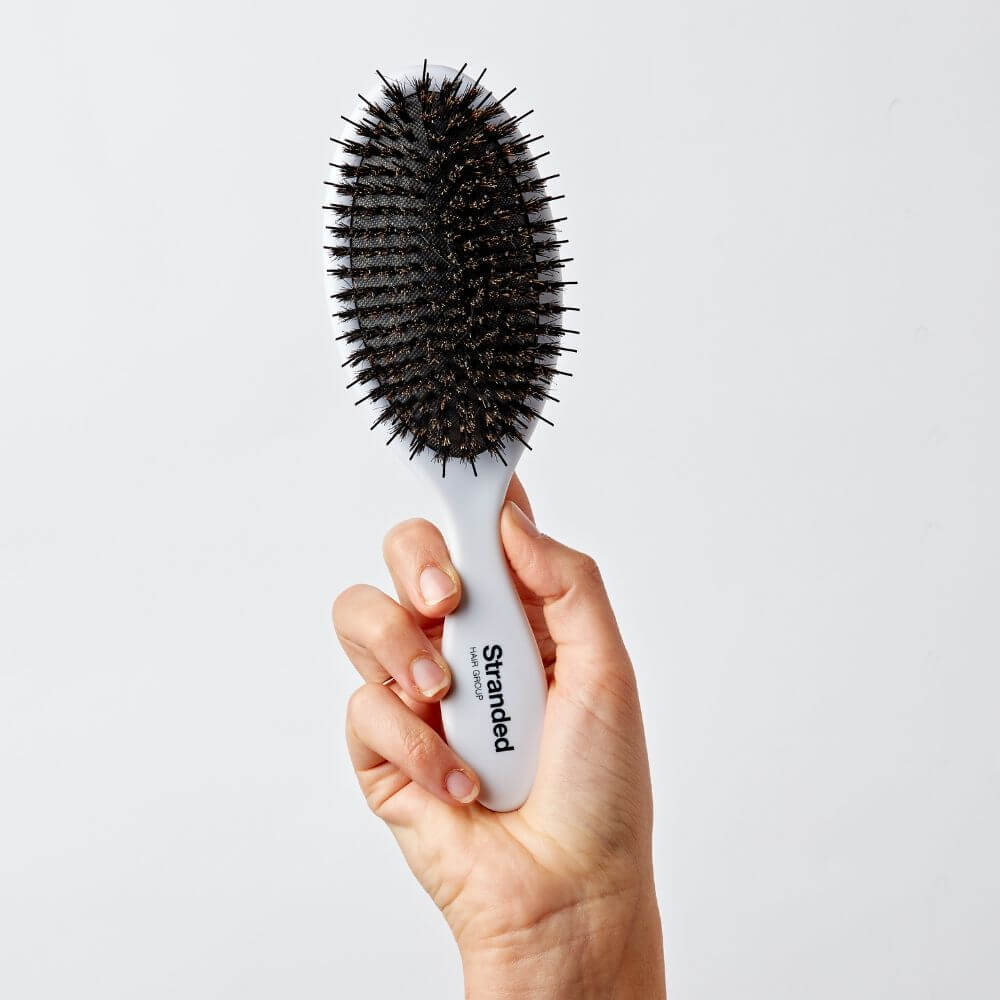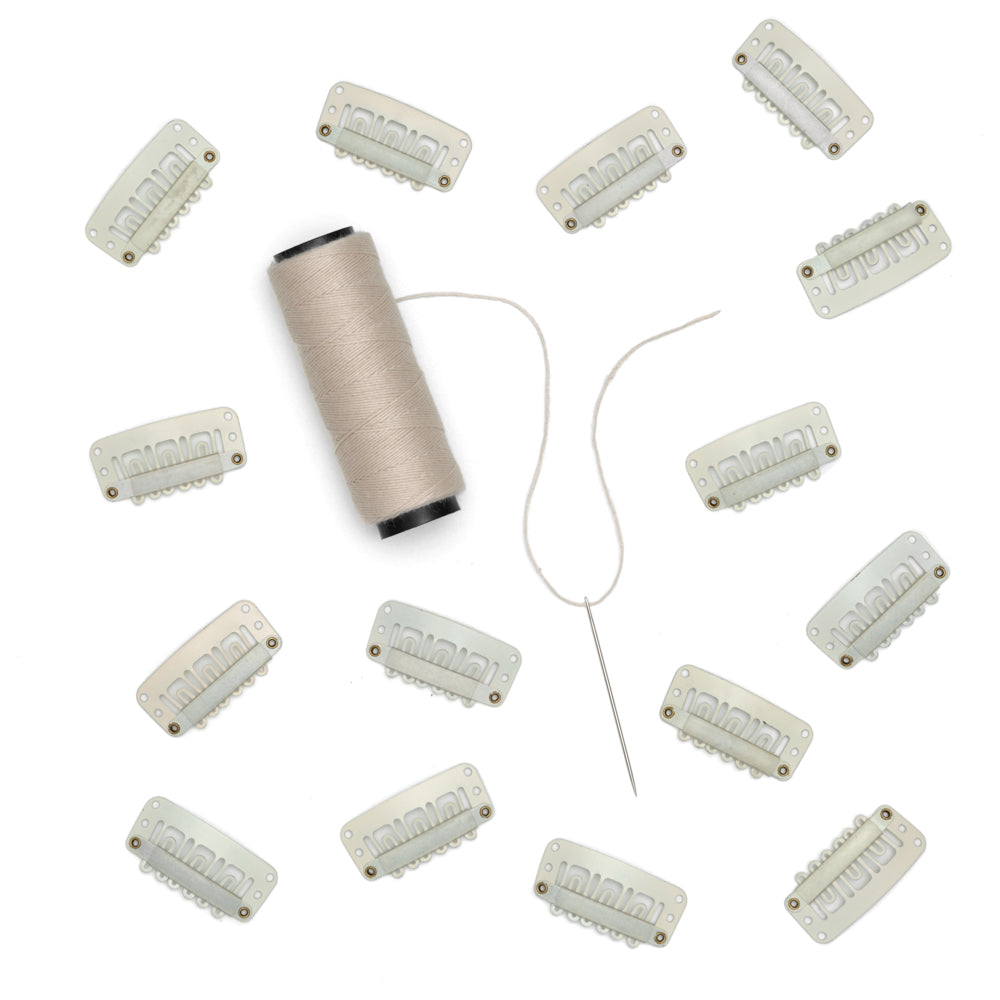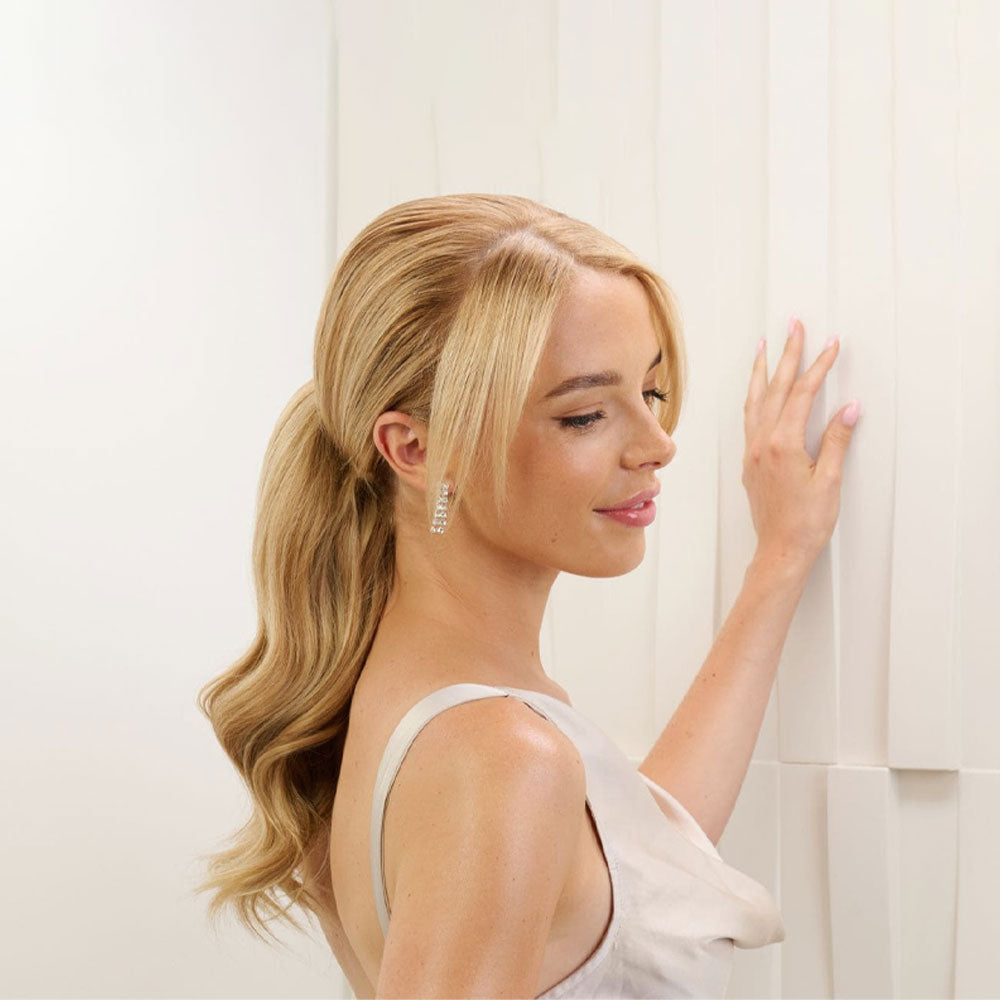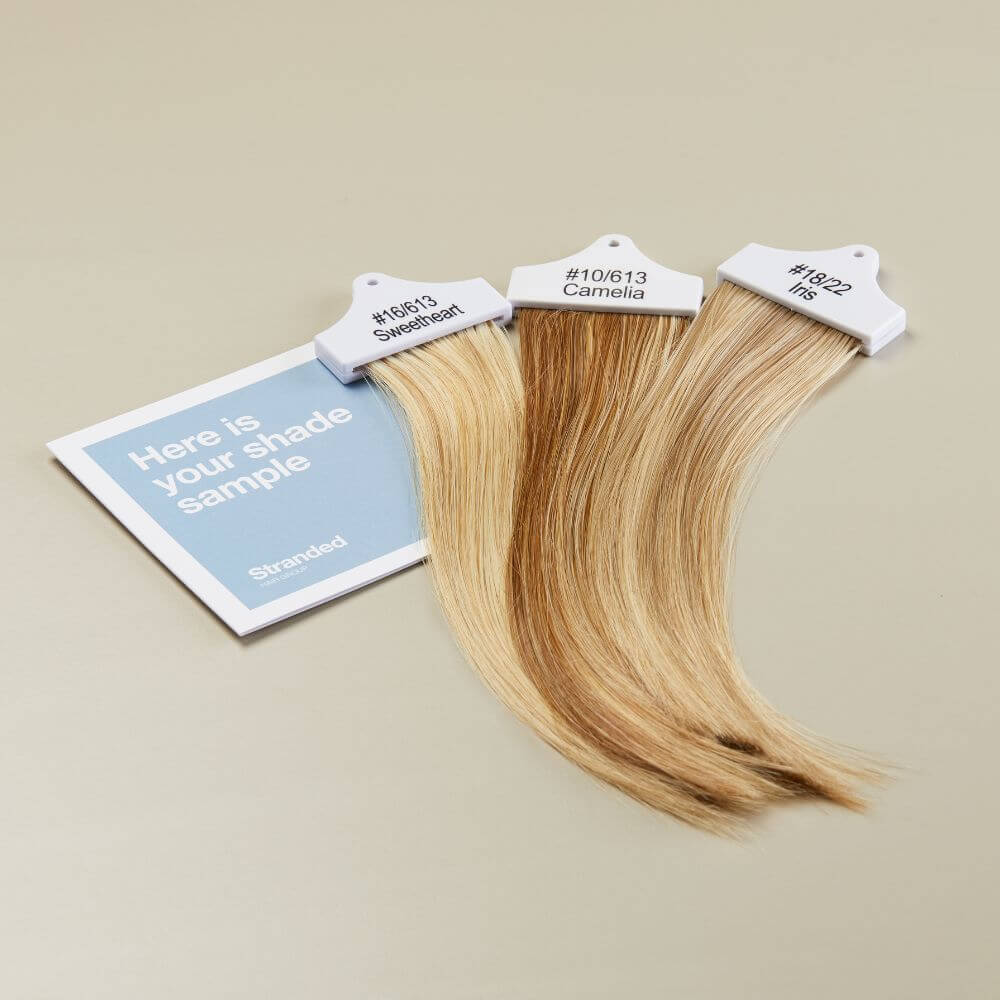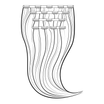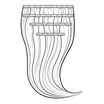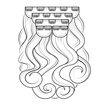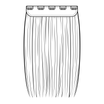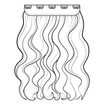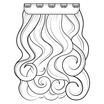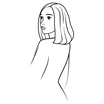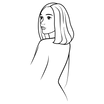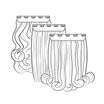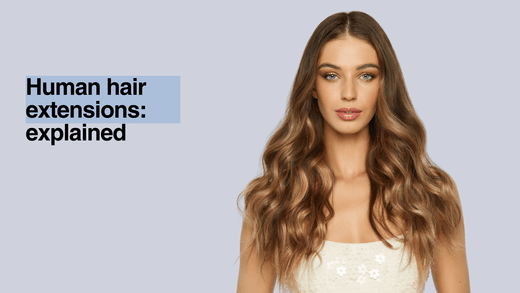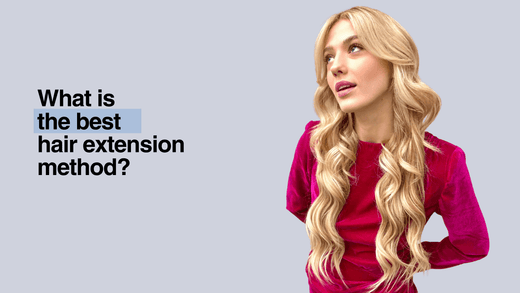You’ve been scouring the web looking for hair extensions and you keep coming across the term ‘human hair’.
Here at Stranded, we’re dedicated to all things extensions and customers, believing good hair days should be every day. From one-pieces to ponytails, human to synthetic, we’re the best when it comes to clip-in hair extensions.But beyond being a brand that wants to sell you products, we know the importance of education and making informed decisions.
We know that deciding to purchase hair extensions isn’t easy - you’re going to want to research, learn and make the most educated decision you can - and that’s why we write blogs like these!
In this article, you will learn everything you need to know about human hair extensions, including their history, the different types of human hair, where it comes from and how to assess their quality and ethicality.
By the end of this blog, you will feel more secure in your knowledge to take your next step in purchasing hair extensions.
History of human hair extensions
According to The Hair Alchemist, the use of human hair in wigs and extensions can date back to 3400 BC in Ancient Egypt, where human hair was found to be mixed with sheep’s wool and vegetable fibres.
Throughout history, especially the 16th-18th Century, human hair has always been a luxury for those in higher powers and positions - popularised by Kings and Queens, as a symbol of wealth and nobility.
From the 20th Century, however, human hair started to become more accessible. Women would collect stray hairs from their hairbrushes to support complicated hairstyles, and the 60’s beehive was often created using clip-in extensions and specially-made hairpieces.
Why is human hair an option in the first place?
Human hair, in the hair extension industry, is considered to be far superior to synthetic hair. Human hair, regardless of the type, is both natural-looking and behaving, providing you with more opportunities to cut, dye and style the extension as though you would your own hair.
Human hair also has more options regarding extension methods. All professionally-fitted extension methods, such as tape and micro bead extensions, are exclusively available in human hair, whilst temporary extensions, such as clip-ins and halos, can be both human hair and synthetic.
Different types of human hair
There are 3 types of human hair: Virgin, Remy and Non-Remy.
Virgin Human Hair
Virgin Human Hair, also known as Virgin Remy, is hair that has never been processed or treated, either by the donor or by the manufacturing factory. Virgin Human Hair typically comes from a single donor, and its cuticles are always intact and aligned in the same direction (known as Remy). All these factors make it the most expensive type of human hair.
Remy Human Hair
Remy Human Hair is human hair that has been minimally processed, either by the donor or manufacturing factory, but has all the cuticles intact and aligned in the same direction. Remy Human Hair typically comes from mixed donors, but can come from a single donor.
Non-Remy Human Hair
Non-Remy Human Hair, also known as 100% Human Hair, is of slightly lower quality, which makes it cheaper. Non-Remy Human Hair simply means that whilst it is all human hair, the cuticles are not always intact or aligned in the same direction. This type of human hair often comes from combs, brushes and salons and is from mixed donors.
Where does the best human hair come from?
Human hair comes from all different places, all around the world. But where does the best human hair come from?
Indian temple hair is considered to be the best human hair in the world. Indian men and women often shave their hair and present it as a sacrifice in Hindu temples - it is their way of showing their gratitude, whilst also symbolic of the sacrifice of material beauty and false ego. The temples then sell the hair to fund their outgoings and support their local community.
Much of the hair sacrificed in the temples by Indian women end up being Virgin Remy hair, making Indian temples the lead exporter of Virgin Remy hair in the world.
Why is human hair so expensive?
Human hair can be considerably more expensive than synthetic hair for multiple reasons. As the name suggests, human hair comes from a person. Quality human hair is ethically sourced, and as such, the donor needs to be paid for providing the hair. Human hair is also a limited natural resource, unlike synthetic fibre hair, so you will pay a premium for it.
Higher quality human hair, such as Virgin Remy and Remy, is going to cost the most as the hair is a limited resource that must meet an extremely high standard.
Human hair, like any extension hair, needs to be treated and processed in a factory. Often these factories are based in China and India, so the price of the hair will also consider factory costs and shipping to the supplier.
How do you know if you have purchased quality human hair?
Shopping with reputable suppliers and learning about the extension’s hair type is the best way to ensure the quality of your human hair. However, there is never any guarantee, as the terms Virgin and Remy are not regulated.
High-quality Virgin Remy and Remy hair are the best on the market. This means that all the cuticles are closed and all point in the same direction, with little to no processing. Purchasing this type of human hair from a reputable supplier is the best way to ensure the quality of your extensions.
Many companies will also give you a letter or certificate of authenticity with Virgin Remy or Remy hair, to reassure the customer of the human hair’s quality.
TOP TIP: Purchase human hair from reputable brands!
Does all the hair in one extension come from the same person?
Most likely not. As ethically sourced human hair is donated and sold, the donor is unlikely to have supplied enough hair for an entire extension. Instead, donated hair of the same colour and quality will be bundled and processed together - known as mixed-donor hair.
However, single-donor hair is available. This hair will almost always be Virgin Remy or Remy, and due to its single-donor label, it can be extremely expensive. The advantage to single-donor hair is that if you want to dye or change the hair, you are almost guaranteed that all the hair will process the same, whereas mixed-donor hair could process differently.
Is human hair ethically sourced?
Human hair is a lucrative market and there will always be companies that abuse this - especially when the terms Virgin and Remy are not regulated. However, purchasing your human hair extensions from reputable, known brands is the best way to ensure that your hair has been ethically sourced.
Ethically sourced human hair means that the women donating the hair have done so by choice and it has been bought by the factory or supplier by proper means.
What now?
You came to this article completely confused about human hair extensions. However, since reading this article, you now know the history of human hair, the different types, where it comes from and how to assess its quality and ethicality.
Here at Stranded, we’re dedicated to making our customers feel confident and helping them achieve their good hair days, every day. We know that deciding to purchase hair extensions isn’t easy - you’re going to want to research, learn and make the most educated decision you can. That’s why we write this content, even if your best decision isn’t clip-in extensions.
So what do you do next?
If you’re not at the end of your extension education just yet, we recommend checking out more of our educational content through our blog, here. Stranded’s blog can teach you everything you need to know about extensions, and not just clip-ins!
We recommend reading our blogs on ‘Hair Extensions for Short Hair’, ‘Hair Extensions Weights Explained’ and ‘Do Hair Extensions Damage Your Hair?’.
Thinking of taking the plunge? Check out our Human Hair Collection. Stranded human hair extensions are made of the highest quality Non-Remy Human Hair.
We recommend our 16” Luxury Human Hair Four Piece Clip-in Extension, for the most natural look (RRP £115).
Perhaps, after reading, you’ve decided that human hair just isn’t for you. These days, synthetic fibre extensions can look incredibly natural and come pre-styled for convenience.
Check out our One Piece Clip-in Extension Collection for instant good hair days, in 4 unique pre-styled looks.
We recommend our 20” Synthetic Wand Wave One Piece Clip-in Extension, for stepped-out-the-salon style in seconds (RRP £34).

